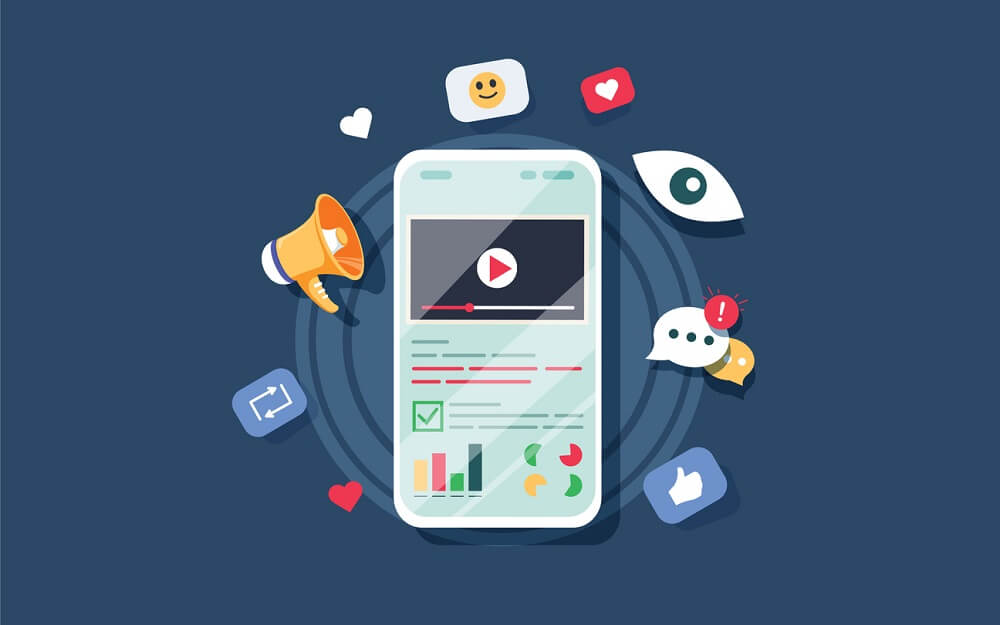Content marketing has solidified its place amongst the core tools in a marketer’s arsenal. In Bill Gates’s prescient essay on the subject back in 1996, he wrote, “Content is where I expect much of the real money will be made on the Internet, just as it was in broadcasting.” This has been largely proven true.
Take a look at the current landscape of content on the Internet. Most businesses, no matter how large or small, are blogging to some degree. They have active social media accounts. The most successful brands publish videos, blog posts, infographics, webinars and an entire gamut of content types that attract users to their sites.
This is the landscape Gates envisioned, and we’ve come far from the initial lack of content on the World Wide Web. We’re now awash in it. The problem isn’t finding content in the first place—it’s sifting through the sheer volume of it.
If you want your brand’s voice to be heard and improve the experience your customers have, you need to know what the best types of content are. Understanding that will provide you with a starting point to better interact with the people that keep your business going.
1. Social Media
These days if you aren’t available on the major social platforms (like Facebook, Instagram, Twitter, LinkedIn and Pinterest), regularly putting out content, you’re probably invisible to a lot of potential clients. It’s worth at least creating profiles on the major social media sites and employ software tools to manage them without much of a time investment.
If nothing else, Facebook is an essential. Its robust custom audience tools and paid content options make it a major opportunity for any business. With an audience of almost 2.5 billion monthly users, you’re just about guaranteed to find people you can connect with in your niche.
And if you want to use social media to drive readers back to your website, GrowthBadger’s Kyle Byers recently analyzed SimilarWeb’s data and came to the conclusion that Facebook delivers nearly two-thirds of all social traffic referrals to websites.
Instagram is another platform that’s hugely popular, particularly for brands that have appealing visual content. Twitter’s making a resurgence. Both Pinterest and Snapchat hold niche potential. No matter what your business is, you need social media.
Don’t neglect regular posts, even if they’re just updates about your business. Take command of your Facebook page and shape your online reputation by being responsive and letting people know you’re there.
2. Personalized Video
Video content has long been recognized as an effective tool for marketing teams. In one study, 52% of marketers said it was the content medium with the best ROI.
But what about personalized video?
I recently spoke with Danny Kalish, cofounder and CTO of Idomoo about this subject. He spent a lot of time doing video for large companies and the results speak for themselves. He explains, “We’ve done a lot of work with mortgage companies, which don’t necessarily sound like they’d have a video-centric audience, but through our work with six out of the top ten mortgage firms in the world, we’ve seen the incredible value that can be created by simply moving to a more customer-centric communication medium. Seeing a complicated subject broken down in a video that’s tailored to your specific needs at a given point in time is a big deal—and we can tell by the numbers.”
Kalish continues, “Looking holistically at our work in this vertical, we found that over 80% of customers watched their personalized videos to the end, with two thirds of them clicking on the call to action that appears at the end of the video.”
Personalized video can be a huge boost for your content, especially if you’re dealing with a complicated subject. People respond well to personalization, no matter what the context—but video is even more effective than most avenues due to the visual format and ease of digestion.

3. Long-Form Blog Content
There’s a reason blogs are still a big part of most companies’ content mix: they still work. As recent marketing statistics show, a whopping 55% of marketers rank blogging as a top priority in their inbound marketing efforts.
Marketers who prioritize blogging are 13 times more likely to have a positive ROI. And most high-performing posts seem to be between 2,250 and 2,500 words.
Shocking? Maybe. But it’s clear that there’s still an audience that wants to see high-quality, well-crafted content that dives deeper than your average article online.
Long-form blog content still has a huge role to play in your mix of content. Try digging into some ideas for longer posts and creating more in-depth pieces if you haven’t—it’s better positioned to rank high in search engines than most other content types.
4. Infographics
Presenting information visually is still one of the most effective ways to get a point across to an audience. When Venngage surveyed over 500 marketers, they found that 37% of the visuals marketers used, were infographics. And infographics were by far the format that drove the most engagement.
There’s always a place for useful information presented in an appealing, easily-digestible and shareable format. Infographics should be an essential part of your digital content mix.
Your customers will appreciate the ability to easily parse the data you’re giving them, and infographics have a tendency to spread far from their original source—especially if they’re heavy with useful statistics, facts or figures within your industry.
5. Webinars
Webinars are one of the most unique ways to get highly-qualified leads. Though they tend not to have a high live attendance rate, with an industry average of around 44%, webinars are still useful vehicles to drive people to learn more about your product. Plus, you can always record the event and send it to those that miss the live showing.
In some marketing circles though, webinars get a bad rap, along with other traditional pieces of content like PDF eBooks. The problem isn’t necessarily with the format—it’s that there are simple tons of mediocre webinars out there that people don’t feel compelled to engage with.
Make yours different. Provide real, lasting value and don’t dig into the hard sell on your webinar. You’ll see the dividends in the form of more qualified leads and more word of mouth exposure.
Content marketing can feel like an ever-rearranging puzzle, as companies try to find the most effective ways to reach more customers.
These five types of content can be the cornerstones of your marketing efforts if you’re willing to experiment, put in the work and incorporate feedback from your customers as you move forward.
Try weaving them into your marketing mix and you’ll reap the rewards of more leads, better engagement and increased sales.










